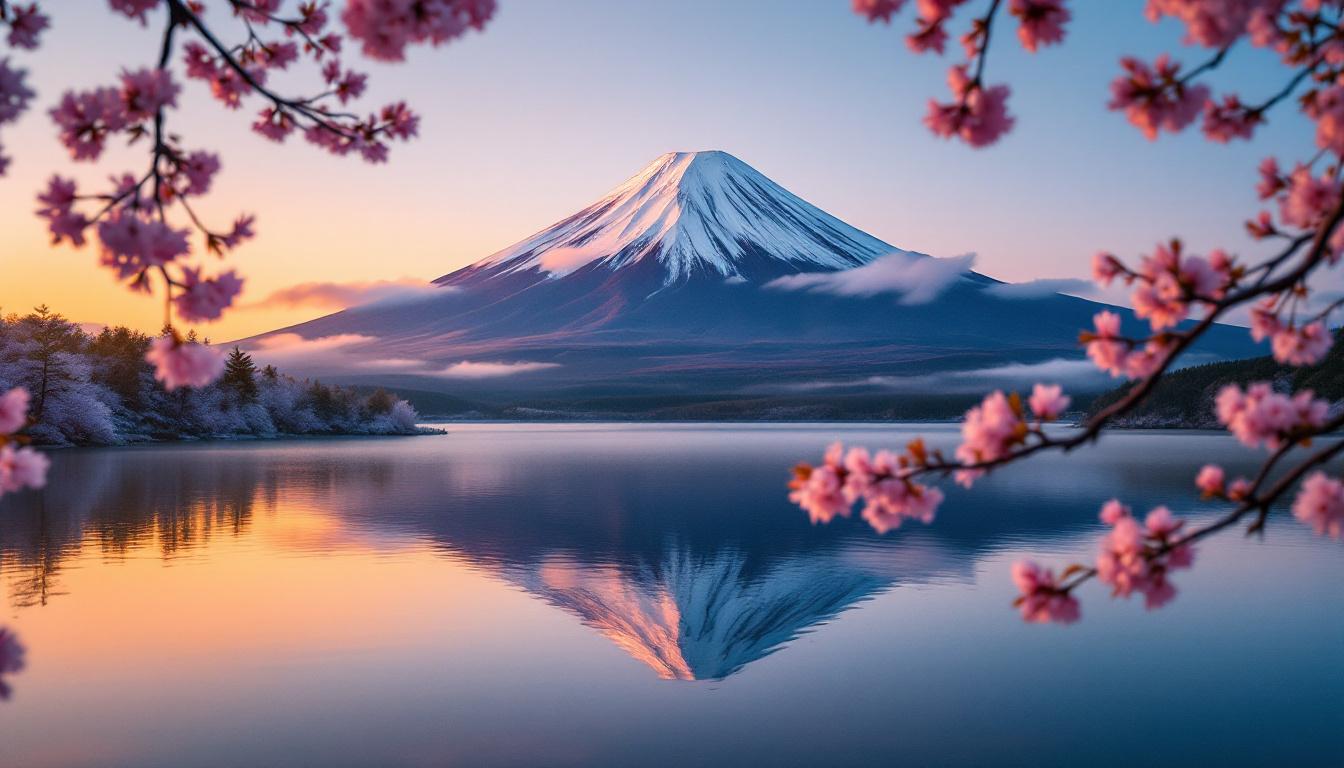Mount Fuji’s majestic silhouette has captured human imagination for centuries, but Japan’s iconic peak is facing unprecedented changes in 2025. As the country’s tallest mountain at 12,389 feet (3,776 meters), this active volcano isn’t just a geographic landmark—it’s a spiritual symbol that draws over 300,000 climbers annually during its brief summer season.
The sacred mountain that’s changing its rules
For the first time in its history, Mount Fuji now requires mandatory reservations and a 4,000 yen ($26) climbing fee. This landmark policy shift aims to address overtourism that has strained the mountain’s delicate ecosystem. Gone are the days of spontaneous summit attempts—climbers without hut reservations are now restricted from entering between 2 p.m. and 3 a.m.
“We’ve seen dramatic changes in visitor patterns. The new reservation system is essential for preserving Fuji’s natural beauty while ensuring safety for everyone,” explains Akira Yoshida, director of the Mount Fuji Conservation Association.
Four paths to the summit, each with distinct personality
The mountain offers four main trails, each with unique characteristics. The Yoshida trail—the most popular route—provides excellent facilities and stunning sunrise views. For those seeking solitude, the Gotemba trail offers fewer crowds but demands nearly 7.5 hours of climbing compared to Yoshida’s 5-6 hours.
The Fujinomiya trail provides the shortest path to the summit but challenges climbers with steep, rocky terrain. Nature lovers prefer the Subashiri route, where the lower portion winds through beautiful forests before merging with Yoshida near the eighth station.
When freezing temperatures meet summer crowds
Despite climbing during July and August when Tokyo swelters, summit temperatures often hover around freezing. This extreme contrast catches many visitors unprepared. Pack layers, including thermal wear and windproof clothing—even in summer.
Similar dramatic climate contrasts can be found at Lake Titicaca in Peru, where high-altitude conditions create unique challenges for travelers.
Beyond the climb: The soul of Fuji-san
The Japanese don’t simply view Fuji as a hiking destination but as a sacred entity. Shinto shrines dot its base, including the ancient Sengen Taisha, where climbers traditionally began their pilgrimages. This spiritual connection resembles the sacred reverence found in Toledo, Spain, where multiple religions intertwined to create cultural treasures.
The Fuji Five Lakes: Where the mountain becomes art
For those who prefer admiring Fuji without the grueling climb, the Fuji Five Lakes region offers postcard-perfect views. Lake Kawaguchi provides the most accessible and stunning reflections, particularly during early morning when the water transforms into a perfect mirror.
“I’ve photographed mountains worldwide, but nothing compares to Fuji’s reflection on a still morning at Kawaguchi. It’s why Hokusai devoted an entire series to capturing its many moods,” notes landscape photographer Mei Tanaka.
Secret spots most tourists miss
While crowds flock to popular viewpoints, locals know that Shojiko, the smallest of the five lakes, offers solitude and unobstructed views. The Ochudo Tunnel along Kawaguchiko’s cycling path provides a unique framed perspective of the mountain through its archway.
For an authentic experience without the tourist hordes, consider the peaceful atmosphere of remote medieval villages where traditional ways of life continue undisturbed.
Where to stay: From mountain huts to luxury ryokans
Mountain huts offer basic accommodations for summit-seekers, with prices around 5,500 yen ($37) for a sleeping space. For a more luxurious experience, lakeside ryokans like Kozantei Ubuya provide hot spring baths with Fuji views, similar to the exclusive accommodations found on intimate island retreats where natural beauty takes center stage.
The contrast between traditional and modern can also be experienced in places like ancient cities where historic markets stand alongside modern architecture.
A living canvas: Fuji through the seasons
While summer offers accessibility, each season transforms Fuji. Autumn paints its lower slopes with fiery maples, winter blankets it in snow, and spring decorates its base with cherry blossoms. The mountain isn’t merely a destination—it’s a continuously changing masterpiece that has inspired artists for centuries.
